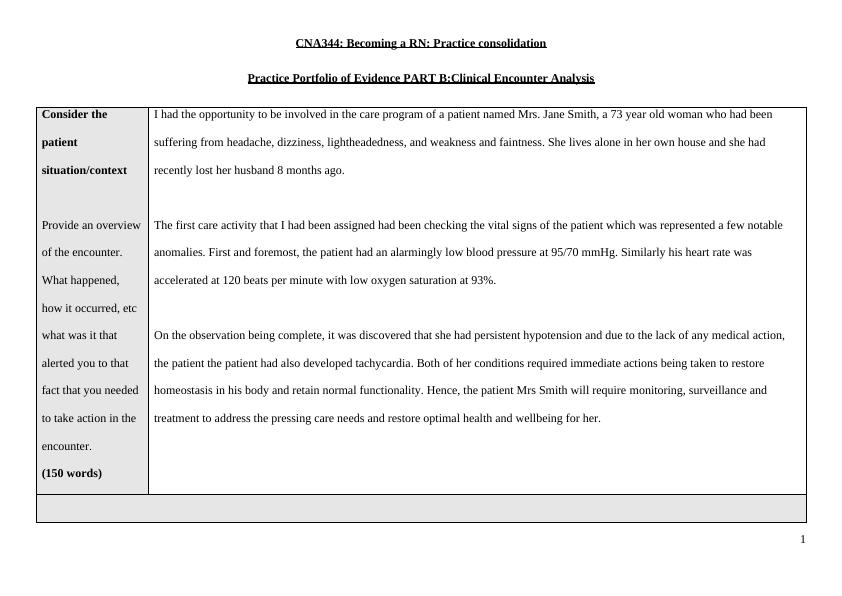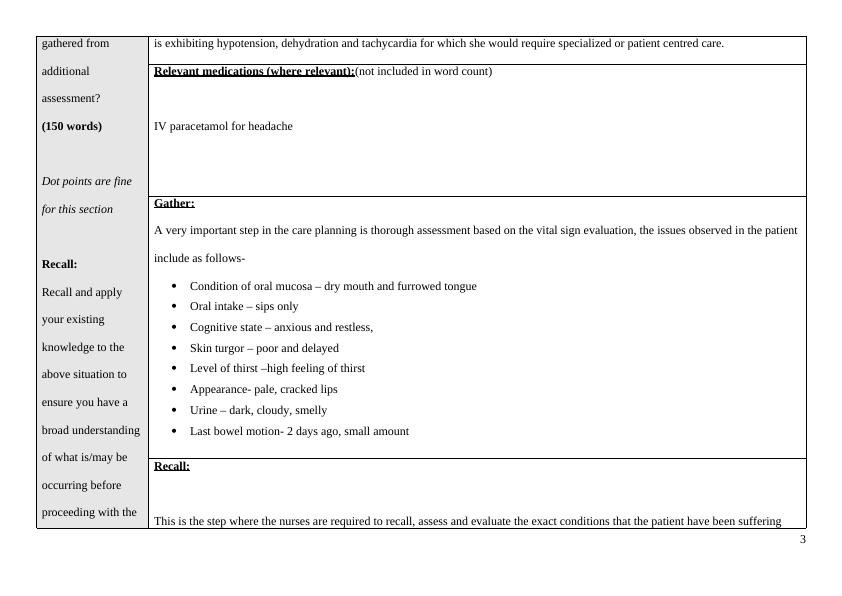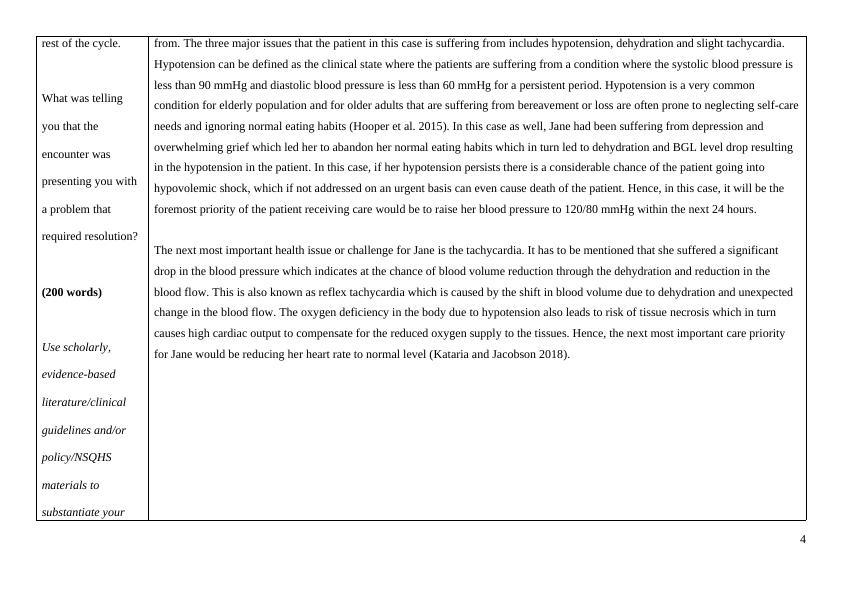CNA344: Clinical Encounter Analysis for Hypotension and Tachycardia
This assignment requires students to analyze a clinical encounter using the clinical reasoning cycle as a framework. They need to demonstrate their ability to think like a registered nurse and apply clinical reasoning skills. The assignment also requires the use of evidence-based literature and clinical guidelines to support their analysis. The due date and semester/term/year information is not provided.
Added on 2023-06-03
About This Document
CNA344: Clinical Encounter Analysis for Hypotension and Tachycardia
This assignment requires students to analyze a clinical encounter using the clinical reasoning cycle as a framework. They need to demonstrate their ability to think like a registered nurse and apply clinical reasoning skills. The assignment also requires the use of evidence-based literature and clinical guidelines to support their analysis. The due date and semester/term/year information is not provided.
Added on 2023-06-03
End of preview
Want to access all the pages? Upload your documents or become a member.




